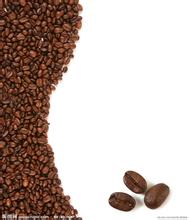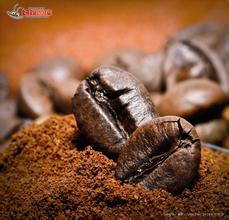Introduction to the variety manor in the grinding scale production area of Costa Rican red honey flavor coffee beans
Higher sweetness, higher sugar content and higher alcohol thickness than washing (under the premise of the same baking degree)
Honey-treated beans need to be well ventilated when they are dry, otherwise the retained pectin mucosa is easy to ferment or mildew and cause bad smell.
We usually see the treatment of honey: yellow honey, red honey, black honey.
Huangmi: (Yellow Honey)
Retain about 30% of the pectin and dry it directly with sunlight for about 8 days, so that the water content reaches a stable value.
Red Honey: (Red Honey)
Retain 80% of the pectin, because more pectin is retained, so it takes more time to dry, while reducing the time of direct sunlight exposure, and shading cloth is also used in some places, which takes about 12 days to dry.
Black honey: (Black Honey)
Almost no pectin is removed, and the pectin is thicker, so it takes about 20-25 days to dry and dehydrate.
The treatment of red honey has always been the focus of our attention. Costa Rican coffee beans are unparalleled in sweetness and smoothness, and this coffee bean we carefully recommend can taste refreshing malic acid flavor after brewing. In the latter part, it can bring a touch of creamy chocolate fragrance. It is 2016 must taste the high-latitude coffee beans produced in Costa Rica famous in the world, rich. The taste is mild, and the coffee beans here have been carefully processed, which is why there is high-quality coffee. Located in the south of SanJos é, the capital of Tarasu, Costa Rica is one of the most valued coffee growers in the country. Tarrazu is one of the major coffee producing areas in the world. Costa Rica is one of the countries with the most diverse biological species in the world, and its pleasant climate has created rich agricultural production resources, among which coffee is one of Costa Rica's main agricultural exports.

Important Notice :
前街咖啡 FrontStreet Coffee has moved to new addredd:
FrontStreet Coffee Address: 315,Donghua East Road,GuangZhou
Tel:020 38364473
- Prev

Introduction of Yega Snow Flavor Flavor production area Grinding scale treatment method for taste manor
Yega Snow Flavor Flavor production area Grinding scale treatment method Taste Manor introduction Sun Yega Coffee sets a strict standard for collecting red fruits (as a result of coffee trees). Before exposure to coffee fruits, unripe green fruits or defective fruits are removed manually, and damaged or moldy fruits are removed in the process of sunning. after two weeks, the flesh sugar and essence are all infiltrated into the coffee beans, and the water content is reduced to 12%.
- Next

Introduction to Panamanian Coffee Flavor description Variety treatment method and Taste Manor
Panamanian Coffee Flavor describes the region where varieties are produced. Panama is also the narrowest country that shares the Atlantic and Pacific coastlines. And this has a far-reaching impact on coffee production. In the coffee-producing area of Chiriqu, the hometown of world-famous estates such as Hacienda La Esmeralda, Elida Estate, Finca Nuguo, and Finca La Mula.
Related
- Detailed explanation of Jadeite planting Land in Panamanian Jadeite Manor introduction to the grading system of Jadeite competitive bidding, Red bid, Green bid and Rose Summer
- Story of Coffee planting in Brenka region of Costa Rica Stonehenge Manor anaerobic heavy honey treatment of flavor mouth
- What's on the barrel of Blue Mountain Coffee beans?
- Can American coffee also pull flowers? How to use hot American style to pull out a good-looking pattern?
- Can you make a cold extract with coffee beans? What is the right proportion for cold-extracted coffee formula?
- Indonesian PWN Gold Mandrine Coffee Origin Features Flavor How to Chong? Mandolin coffee is American.
- A brief introduction to the flavor characteristics of Brazilian yellow bourbon coffee beans
- What is the effect of different water quality on the flavor of cold-extracted coffee? What kind of water is best for brewing coffee?
- Why do you think of Rose Summer whenever you mention Panamanian coffee?
- Introduction to the characteristics of authentic blue mountain coffee bean producing areas? What is the CIB Coffee Authority in Jamaica?

